Nava company, with these 11,000 kn and 5,000 kn presses, both with 2500×1800 mm worktables, confirms to be a reference supplier for the applications with high-quality content and performances, therefore ideal technical partner for all die makers that intend to widen their horizons and their business, making technology a winning weapon to beat the low-cost and not qualitative competition.
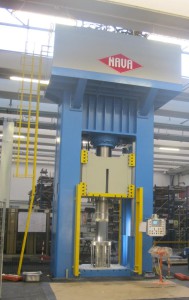 To allow customers to boost the die technology at best, intercepting more and more advanced requirements and lower and lower price targets issued by the industry of high-end household appliances and of the medical sector, the press presented by Nava is conceived with the prearrangement of a much higher triple-acting force compared to what necessary for the only part extraction, on the contrary permitting to implement pre-drawings to recall the material to be spent in the successive process phases. Still according to this strategy, they have conceived a bottom blank holder that can operate both in passive way (that is to say operating the draw ring that contrasts the sheet metal flow in the die), and in active way (operating the drawing tool). The latter possibility permits a notable enlargement of the range of formable parts with the same nominal force of the press, since it allows using a contrast force on the sheet metal corresponding to the maximum force of the ram (then doubling the previous limit given by the nominal value of the blank holder force), anyway with a noteworthy forming active force.
To allow customers to boost the die technology at best, intercepting more and more advanced requirements and lower and lower price targets issued by the industry of high-end household appliances and of the medical sector, the press presented by Nava is conceived with the prearrangement of a much higher triple-acting force compared to what necessary for the only part extraction, on the contrary permitting to implement pre-drawings to recall the material to be spent in the successive process phases. Still according to this strategy, they have conceived a bottom blank holder that can operate both in passive way (that is to say operating the draw ring that contrasts the sheet metal flow in the die), and in active way (operating the drawing tool). The latter possibility permits a notable enlargement of the range of formable parts with the same nominal force of the press, since it allows using a contrast force on the sheet metal corresponding to the maximum force of the ram (then doubling the previous limit given by the nominal value of the blank holder force), anyway with a noteworthy forming active force.
Forces and stresses are not a problem
In this ambit, there are not several die makers equipped with suitable machines for dealing with forming job orders that issue so demanding challenges: requirements not only include the mastery of a forefront die implementation technique but especially the possible support and the very strict collaboration with the engineers and the producers of the press, to make machine and 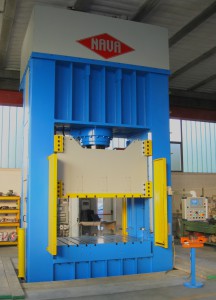 dies interact at best, creating a well-matched and winning team. Each of the two presses is equipped with a ram with maximum adjustable force conveyed on flat guides on eight tracks, with a high ratio between guide height and table sizes. This solution– typical of Nava’s design philosophy – assures the best result concerning the eccentric stresses that may develop in the die, owing to the asymmetries of the pieces to be obtained. The machine is equipped with a blank-holder cushion with reaction force that can be regulated in particularly flexible manner during the entire cycle execution, in order to satisfy fully the needs of holding or releasing the sheet metal, according to the differentiated die areas. Only in this way, you can concretely enjoy all those solutions devised and implemented in the die to avoid excessive thinning of the piece that would lead to wastes and to unsatisfactory quality in drawn components. Each of the reaction cylinders is electronically managed to assure the wished pressure profile according to the drawing stroke. The cushion is equipped with a fast motion function, permitting to reduce the drawing cycle time as much as possible. The management of contrast force variations on the sheet metal in the die is assured also in case of operation with active blank holder, likewise the one available as standard on all NAVA presses for the operation with the reaction blank holder. In case of active blank holder, variations are created by the circuit of the ram that, by pressing, controls the sheet metal flow in the die while the blank holder circuit imposes the motion to the male tool.
dies interact at best, creating a well-matched and winning team. Each of the two presses is equipped with a ram with maximum adjustable force conveyed on flat guides on eight tracks, with a high ratio between guide height and table sizes. This solution– typical of Nava’s design philosophy – assures the best result concerning the eccentric stresses that may develop in the die, owing to the asymmetries of the pieces to be obtained. The machine is equipped with a blank-holder cushion with reaction force that can be regulated in particularly flexible manner during the entire cycle execution, in order to satisfy fully the needs of holding or releasing the sheet metal, according to the differentiated die areas. Only in this way, you can concretely enjoy all those solutions devised and implemented in the die to avoid excessive thinning of the piece that would lead to wastes and to unsatisfactory quality in drawn components. Each of the reaction cylinders is electronically managed to assure the wished pressure profile according to the drawing stroke. The cushion is equipped with a fast motion function, permitting to reduce the drawing cycle time as much as possible. The management of contrast force variations on the sheet metal in the die is assured also in case of operation with active blank holder, likewise the one available as standard on all NAVA presses for the operation with the reaction blank holder. In case of active blank holder, variations are created by the circuit of the ram that, by pressing, controls the sheet metal flow in the die while the blank holder circuit imposes the motion to the male tool.
Everything under control
From the point of view of the man-machine interface, Nava company has made further efforts to achieve a more and more suitable diagnostics for allowing operators to identify at a glance eventual malfunction causes, like especially inconsistent settings of machining parameters or wrong machine preparation to start the forming cycle. The system proposes in fact on-line help pages, sensitive to the context, which propose the necessary conditions to be detected to accomplish the desired working phases, in order to verify, in case of need, poin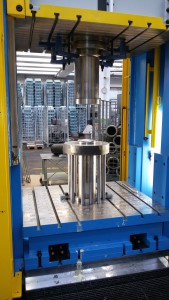 t by point, what condition is missing to gain access to the wished function. To facilitate the task of die setting and of regulation of the optimal parameters to be selected to produce the wished item, the press control was implemented with the addition of graphic pages that illustrate the trends of process values in their evolution during the pressing process. Thanks to this simple but powerful tracing function of the process, it is possible to check the drawing evolution step by step during its fulfilment, especially in the salient phases that take place with closed die, therefore turning out to be more difficult to be followed from the outside. On the other hand, this base function can be extended (inputting the relative necessary hardware and software modules), permitting the storing and the printing of the dynamic process image. With the evolved version of this cycle tracing function, we can enjoy the achieved graph both on video and on paper, to ponder the expected evolution comparing it with the actual one achieved and with the output on the material piece. This function, in particular, represents a valid support for those die makers that can have the need to document the adopted machining parameters and the evolution of the working cycle executed to produce the pre-series with which the die testing has been carried out.
t by point, what condition is missing to gain access to the wished function. To facilitate the task of die setting and of regulation of the optimal parameters to be selected to produce the wished item, the press control was implemented with the addition of graphic pages that illustrate the trends of process values in their evolution during the pressing process. Thanks to this simple but powerful tracing function of the process, it is possible to check the drawing evolution step by step during its fulfilment, especially in the salient phases that take place with closed die, therefore turning out to be more difficult to be followed from the outside. On the other hand, this base function can be extended (inputting the relative necessary hardware and software modules), permitting the storing and the printing of the dynamic process image. With the evolved version of this cycle tracing function, we can enjoy the achieved graph both on video and on paper, to ponder the expected evolution comparing it with the actual one achieved and with the output on the material piece. This function, in particular, represents a valid support for those die makers that can have the need to document the adopted machining parameters and the evolution of the working cycle executed to produce the pre-series with which the die testing has been carried out.
box
The advantages of those that have chosen it
The customers that have purchased these machines could enhance their structure with the right prearrangement to widen their business in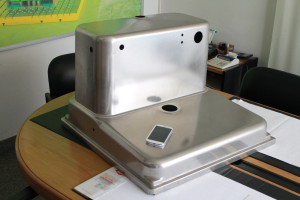 very significant manner on the most qualitative markets of North Europe and of the United States, in other words applying with a state-of-the art machine for supplying the most demanding markets in terms of quality of formed parts and timeliness in the job order fulfilment. This has allowed them to propose their offer on the Italian, European and world markets, with a wide action on a much bigger array of potential customers, also where it matters the approach with the correct credentials from the technological and organizational point of view, to be able to aspire actually to job order contracts.
very significant manner on the most qualitative markets of North Europe and of the United States, in other words applying with a state-of-the art machine for supplying the most demanding markets in terms of quality of formed parts and timeliness in the job order fulfilment. This has allowed them to propose their offer on the Italian, European and world markets, with a wide action on a much bigger array of potential customers, also where it matters the approach with the correct credentials from the technological and organizational point of view, to be able to aspire actually to job order contracts.
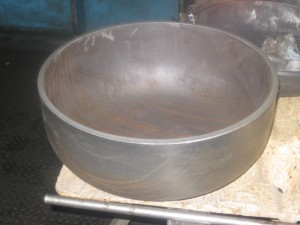 Technical characteristics of presses
Technical characteristics of presses
The top version of the presses manufactured by Nava company is 2MI 1100/500 for drawing, with maximum ram force of 11,000 kN, blank holder under 5,000 kN, third upper action 800 kN, worktables 2500×1800 mm. The minor force drawing model is 2MI 500/300, with maximum ram force of 5,000 kN, bottom blank holder 3,000 kN, worktables 2500×1800 mm. With such characteristics, these presses are conceived as solution to the special requirements of deep and very deep drawing for stainless steel tanks dedicated to the industrial sectors of white goods and medical, a higher-end market segment, where the press quality necessarily makes the difference, permitting to produce parts otherwise unconceivable.



